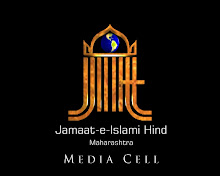By Nikita Garia
France’s ban on the burqa came into effect earlier this week. The law, which the French parliament approved last year, forbids people from concealing their faces in public. While it does not explicitly mention the full-body robe, the burqa is widely recognized as the ban’s main target. France, which is home to Europe’s largest Muslim community, is the first country to push through this controversial ban.Tauseef Mustafa/Agence France-Presse/Getty Images
Can a ban on burqa be imposed in India?
What implications does this have for India – a country which has one of the largest Muslim population in the world?India’s 175 million Muslims make them the country’s largest minority. Around 60% are under 25 years of age, meaning this figure is likely to increase in coming years.
In India too tensions have occasionally flared up over the use of the burqa in public spaces. But Meraj A. Khan, a legal consultant with National Commission for Minorities told India Real Time that these were “isolated incidents.” He said the commission, which evaluates the progress of development of minorities and looks into complaints of discrimination, “rarely receives complaints on episodes involving … burqa-clad women.”
On France’s ban, Mr. Khan said that India is unlikely to follow suit. “In India, it is up to the individual when it comes to religion. Nobody can enforce such things here.”
In recent years there have been several incidents involving the burqa.
In 2009, a state college in Karnataka, told a student she was not allowed to attend classes wearing a burqa. It was later reported that the young girl reached a “compromise arrangement” with the college but did not continue in the same college.
Days later, violent protests sparked in Hyderabad after a college principal allegedly told students not to wear a burqa.
But opposite episodes have also occurred. In July 2010, a teacher at Kolkata’s Aliah University, which has a focus on Islamic studies, was not allowed to teach without a burqa. The report followed an official notice released in April 2010, in which the university dismissed suggestions it enforced a dress code, mentioning specifically the use of the burqa within its campus.
Noorjehan Safia Niaz, a founding member of Bhartiya Muslim Mahila Andolan, a movement which works to improve the status of Muslim women in India, said security concerns have not been a major issue when it comes to dress. “Muslim women in India comply with all the laws. They are active participants when it comes to elections and have their photos on their passports. So identification and security have never been an issue as such,” she said.
Discrimination, however, has sometimes caused problems, said Ms. Niaz. “There are cases when women are not considered for a particular job because they wear a burqa. In such cases, women have negotiated. They do not wear burqa while at work but before and after it they put it on.” Overall, Ms. Niaz said that women themselves – not the law – should decide what to wear. “Let each woman decide what she wants to wear. Neither can you enforce a ban on burqa nor can you force women to wear it.”
Some political forces in India, including the right-wing Hindu nationalist party Shiv Sena, would favor a ban. Citing security concerns, Neelam Gorhe, spokesperson for Shiva Sena, said that the party “welcomes the ban by the French government.” Although the party has not demanded an outright ban, it suggested there should be some restrictions on where people would be allowed to wear the burqa. She mentioned poll booths as an example of where it should not be allowed.
